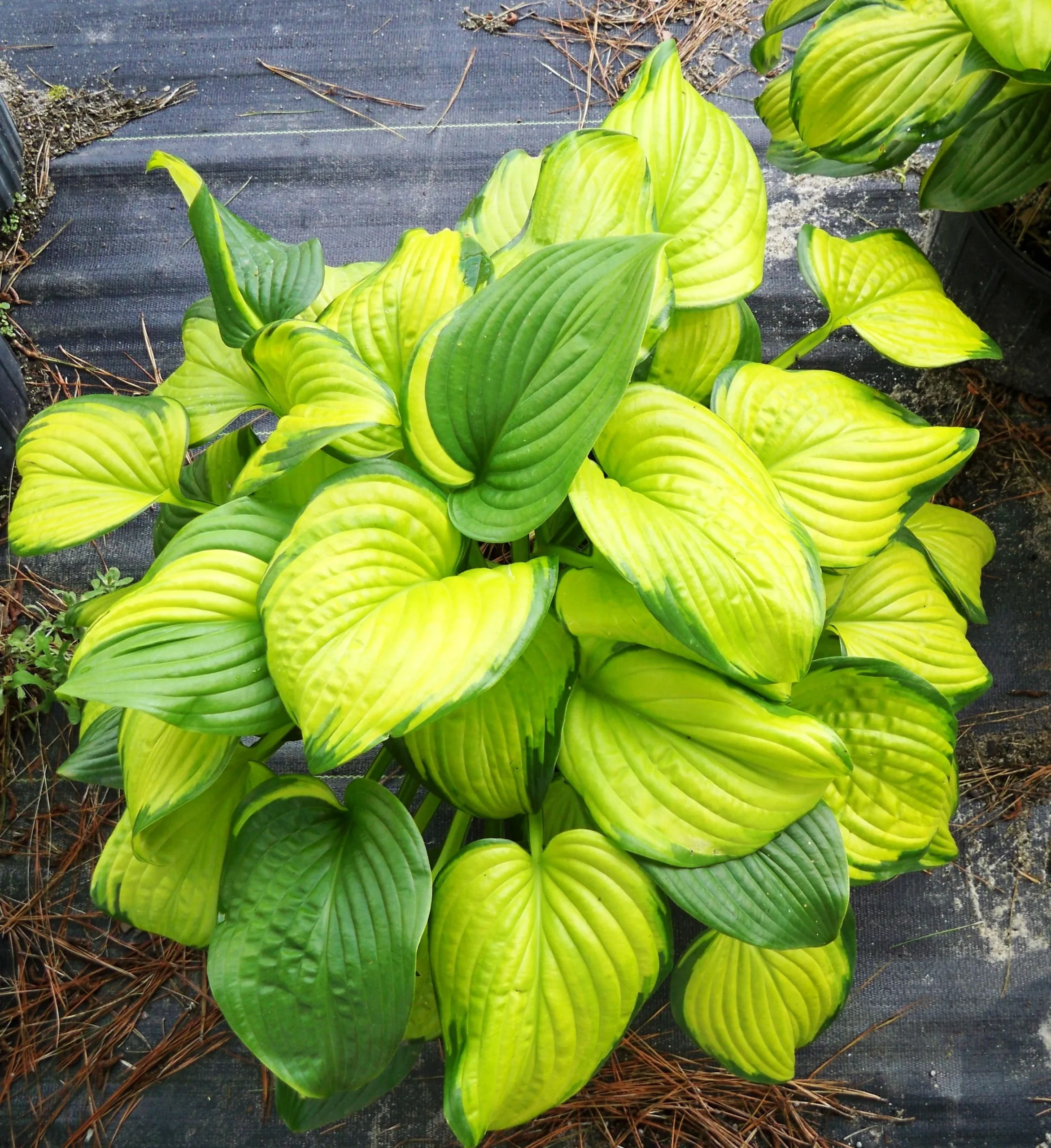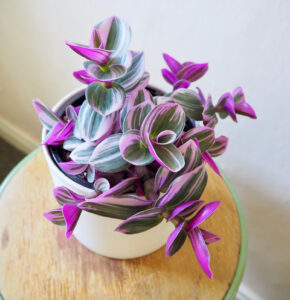The Stained Glass Hosta is a striking cultivar of the Hosta plant, cherished for its vibrant foliage and low-maintenance care requirements. A sport of the ‘Guacamole’ hosta, this variety is especially valued for its variegated leaves with glowing golden centers and rich dark green margins, which resemble the brilliance of stained glass when sunlight filters through. Whether you’re a seasoned gardener or a beginner, this guide will help you keep your Stained Glass Hosta healthy, thriving, and looking its best.
Plant Overview
- Botanical Name: Hosta ‘Stained Glass’
- Common Name: Stained Glass Hosta
- Type: Herbaceous perennial
- USDA Hardiness Zones: 3–9
- Mature Size: 15–20 inches tall, 30–48 inches wide
- Light Requirements: Partial to full shade
- Flower Color: Fragrant pale lavender (mid to late summer)
- Foliage: Chartreuse to gold center with dark green margins
1. Choosing the Right Location
Stained Glass Hostas are shade-loving plants, but this particular variety can tolerate more sun than many of its relatives. Here’s what to consider:
- Light: Ideally, plant your Stained Glass Hosta in morning sun and afternoon shade. It can handle up to 4 hours of direct sun, especially in cooler climates. Too much sun can bleach the leaves or cause scorching.
- Soil: Hostas prefer rich, well-draining soil with high organic content. Slightly acidic to neutral pH (6.0 to 7.0) is ideal.
- Airflow: Good air circulation helps prevent fungal issues like leaf spot. Avoid overcrowding with other plants.
2. Planting Instructions
- When to Plant: Best planted in spring or early fall when temperatures are moderate.
- How to Plant:
- Dig a hole twice the width of the root ball and slightly deeper.
- Mix in compost or aged manure with native soil to improve texture and fertility.
- Place the hosta so that the crown (where the leaves emerge) is level with the soil surface.
- Backfill and gently firm the soil around the roots.
- Water thoroughly to settle the soil.
3. Watering Needs
Hostas love moisture but hate soggy roots. A consistent watering schedule will keep your plant looking lush.
- Newly Planted Hostas: Water 2–3 times per week for the first few weeks, especially in dry weather.
- Established Plants: About 1 inch of water per week, from rainfall or supplemental watering. Increase during hot spells or dry conditions.
- Watering Tips:
- Water at the base to avoid wetting the foliage, which can invite disease.
- Mulching helps retain soil moisture and keeps roots cool.
4. Mulching and Feeding
- Mulch: Apply a 2–3 inch layer of organic mulch (shredded bark, compost, or leaf mold) around the plant, avoiding direct contact with the crown to prevent rot.
- Fertilizer:
- In spring, apply a slow-release balanced fertilizer (e.g., 10-10-10) when new growth appears.
- Alternatively, use compost or organic fertilizer to enrich the soil naturally.
- Avoid over-fertilizing, which can cause leggy growth or leaf burn.
5. Pruning and Maintenance
- Deadheading: After the fragrant lavender flowers fade in late summer, you can remove the flower stalks to tidy up the plant.
- Foliage Care: Remove yellow or damaged leaves throughout the season. In fall, cut back the foliage once it turns brown and dies back naturally.
- Dividing Hostas: Every 3–5 years, divide large clumps in early spring or fall to rejuvenate the plant and encourage more vigorous growth.
6. Pest and Disease Management
Stained Glass Hostas are generally hardy, but they do have a few common enemies:
Pests
- Slugs and Snails: These are the most common pests and leave behind ragged holes and slime trails.
- Control Tips: Use slug bait, diatomaceous earth, or crushed eggshells. Beer traps can also work.
- Deer and Rabbits: These animals love to munch on hostas.
- Control Tips: Use fencing, repellents, or plant hostas near more strongly-scented plants like lavender or garlic.
Diseases
- Crown Rot: Caused by overly wet soil or poor drainage.
- Solution: Ensure proper drainage and avoid overwatering.
- Leaf Spot or Anthracnose: Appear as brown or black spots on the foliage.
- Prevention: Water early in the day and improve airflow. Remove infected leaves.
7. Winter Care
Stained Glass Hostas are hardy perennials that go dormant in winter.
- Fall Prep:
- Cut back the foliage after the first frost.
- Remove any mulch that could harbor slugs over winter.
- In Cold Climates:
- Apply a light winter mulch (like straw or pine needles) after the ground freezes to protect roots from frost heave.
- Container Hostas:
- If grown in pots, protect the container by insulating it or moving it into an unheated garage or shed.
8. Container Growing Tips
Stained Glass Hostas also make excellent container plants:
- Choose a large pot with good drainage.
- Use a rich potting mix with compost.
- Water more frequently than in-ground plants, as containers dry out faster.
- Fertilize monthly during the growing season with a diluted balanced fertilizer.
9. Companion Planting
Hostas pair well with other shade lovers. Try combining with:
- Ferns
- Astilbe
- Heuchera (Coral Bells)
- Bleeding Heart
- Japanese Forest Grass
- Brunnera
The bright foliage of Stained Glass Hosta contrasts beautifully with darker greens, silvers, or purples, adding dimension and interest to shaded gardens.
10. Troubleshooting Common Issues
| Problem | Cause | Solution |
|---|---|---|
| Leaves turning pale | Too much sun or nutrient deficiency | Move to more shade; feed with balanced fertilizer |
| Leaf edges browning | Underwatering or excessive sun | Water more consistently; provide shade |
| Slug damage | Ragged holes and slime trails | Use slug deterrents or traps |
| Wilting or stunted growth | Root rot or compacted soil | Improve drainage; amend soil with compost |
Conclusion
The Stained Glass Hosta is more than just a pretty face—it’s a reliable, low-maintenance plant that brings radiant color to shaded spots. With just a bit of care and attention, it will reward you with season after season of glowing foliage and charming blooms. Whether tucked into a woodland garden or featured in a decorative container, this hosta is a standout addition to any landscape.


